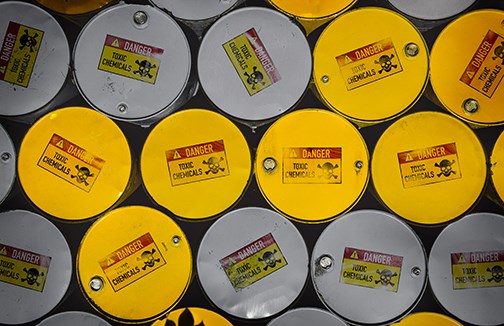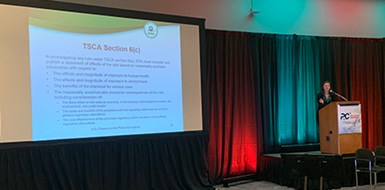The manufacturing parts cleaning industry is evolving quickly. Emerging regulations are affecting common cleaning processes by driving the need to implement new chemistry formulations within their cleaning equipment. This, paired with demands for higher quality cleaning, is causing many manufacturers to take a hard look at their cleaning methods.
Therefore, it has never been more critical for machine shops to work with their parts cleaning products’ suppliers to discover the most fitting cleaning processes for their applications. Keeping in close contact with a supplier and developing a strong relationship is vital. A good supplier is knowledgeable about the latest cleaning regulations and happy to educate their customers to find the most cost-efficient way to clean parts no matter the specifications required.
Featured Content
While these are challenging times for cleaning product end users, cleaning OEMs are facing their own obstacles. Continued supply chain issues are a pain point, especially when raw material availability is still an issue as well as price fluctuations.
To understand these current industry trends and the important conversations involving parts cleaning that will likely be reflected at the 2023 Precision Machining Technology Show’s (PMTS) cleaning exhibits, I spoke with several professionals in the cleaning sector. Most of them are employed by companies that will be exhibiting at PMTS this year. PMTS will be held at the Huntington Convention Center of Cleveland, in Cleveland, Ohio, April 18-20, 2023.
Risky Business

Several popular solvents used regularly by metalworking manufacturers are in the EPA’s risk management step. This step involves imposing restrictions to eliminate unreasonable risk to users. Photo Credit: Getty Images
The U.S. Environmental Protection Agency (EPA) regulations of popular vapor degreasing cleaning chemistries are (or will soon be) disrupting many manufacturers’ cleaning methods. Open-top vapor degreasing equipment will require major changes in their production lines and throughput, according to Darren Williams, Ph.D., professor of physical chemistry at Sam Houston State University, Cleaning Research Group leader and 2023 Parts Cleaning Conference co-chair.
These regulations can be traced back to 2016 when the EPA became empowered to evaluate chemical risks to workers. An amendment to the 1976 Toxic Substances Control Act enabled the agency to identify its first 10 high priority chemicals for risk evaluation. Seven of the 10 chemicals were cleaning solvents, including perchloroethylene (PCE), trichloroethylene (TCE) and n-propyl bromide (nPB), the vapor degreasing solvents that many manufacturers use daily for cleaning their metal parts.
“All three of these have been deemed as a whole chemical to pose an unreasonable risk and have entered the risk management step,” Williams says. “This step involves the EPA imposing restrictions to eliminate unreasonable risk.”
Although a popular nonflammable blend called trans-1,2-dichloroethylene (DCE) was formulated to replace these solvents, the EPA targeted it as well when this fluid was added to the risk evaluation stage in 2019.
Also, polyfluoroalkyl substances (PFAS) — which are critical in the manufacture of many products such as medical technologies, semiconductors, batteries, phones and so on — have also been victims of regulatory action. In fact, regulations on these substances have caused 3M, a large manufacturer of fluorinated solvent blend components, to announce it is exiting this market completely by the end of 2025.
“Bottom line, there is a regulatory tornado headed for solvent cleaning,” Williams exclaims.
Common sense might tell manufacturers to switch to aqueous cleaning to avoid what seems to be ongoing regulations. However, it is not that simple. Switching to aqueous cleaning requires similar costs and disruptions, Williams says.

Solvent cleaning, especially for the vapor degreasing process, is evolving. Working with a reputable cleaning supplier who can offer advice on how to handle the regulatory disruptions is recommended. Photo Credit: Getty Images
Instead, preparation is key. “If solvent cleaning is a critical part of your process, begin budgeting now for the costs of change,” he continues. “Assemble a team that includes your internal manufacturing, cleaning, safety, waste and regulatory folks as well as suppliers, customers and consultants. A good team will allow you to use this disruption to improve the consistency and quality of your parts.”
Customer Demands — A Double Whammy
Besides regulatory roadblocks, manufacturers that clean metal parts have become subjected to more stringent cleaning requirements — a double whammy. In other words, manufacturers are getting hit with rules from the top of the chain (EPA) to the bottom (their customers). Their customers are demanding their parts be cleaner than they have in the past due to the nature of the parts.
For example, for electric vehicles and autonomous vehicles, a lot more precision is necessary for machined components, which means cleanliness of these components is more critical as well, says Sandro Siminovich, director of sales at Ecoclean Inc.
“Our customers need help monitoring unwanted contamination in a simple way.”
He adds that stricter demands are not only coming from the automotive sector. Many industries are experiencing this as well, including companies that supply to medical customers and other industries.
Often, contamination occurs after the cleaning process, which can be frustrating for manufacturers. “For example, oil residues can cause coating issues,” says Juliane Schulze, managing director at Sita Messtechnik GmbH. Opportunities like these are appropriate to mention to cleaning suppliers in order to discover the best way to alleviate the problem.
“Our customers need help monitoring unwanted contamination in a simple way,” Schulze recognizes. She adds that not only do her customers have challenges defining cleanliness specifications but they strive to clean in the most cost-efficient way possible.
Help, Please!
All the PMTS cleaning exhibitors I spoke with say their customers are leaning on them more so than in the past because of these rigorous cleaning restrictions coming from all directions.
Most machine shops tend to know when there is a cleaning issue, but not necessarily what is causing it. “Offering the support to go in and look at the chemicals and wash systems to help identify issues is a huge advantage to us and the customer,” says Joseph Beckley, senior formulations chemist at Northern Technologies International Corp. “I was recently on-site at a production startup project, and the plant manager said to our team, ‘I can find suppliers all day long, but what we need are partners to help us. Thank you for coming here.’”
Sita is also finding that its customers are needing help by way of more training on how to use contamination monitoring and cleanliness inspection to improve their cleaning processes. “They also need assistance communicating internally why the parts cleaning process is essential,” Schulze explains.
“I’ve seen customers go for a product with lower performance just because it was available.”
According to David Ferguson, precision cleaning commercial sales manager at MicroCare, his customers need help with regard to EPA regulations. “MicroCare customers are asking what solutions we have to replace their historical or legacy solvent and what is required to make a smooth transition to the new cleaning fluid,” he says. The timing of moving to a new fluid is a concern as well. The process involves their downstream customer qualifications, which could take up to three years in some cases, Ferguson explains.
Product Unavailability
Product performance is often at the forefront of a sale. But, according to Beckley, this has not been true since pre-COVID pandemic years, from what he has experienced. “I’ve seen customers willing to try unfamiliar products just because they are available,” he says. “Now at the forefront seems to be, ‘you can supply it’.”
He adds that product availability is improving, but still not at the level it was prior to the pandemic.
Why PMTS?
The precision machining niche that PMTS encompasses, and the manageable scale of the show, makes it unique for attendees who are interested in learning more about cleaning. Also, as shops increasingly add capabilities,

The 2023 Parts Cleaning Conference will be held at the Precision Machining Technology Show on April 19 at the Huntington Convention Center of Cleveland.
Photo Credit: PM
such as cleaning to satisfy customers’ needs, attendees will find it convenient that cleaning exhibitors are interspersed with the precision machining exhibitors.
Siminovich has been exhibiting at the show with Ecoclean since the early 2000s and believes the show serves an industry that is always growing. “It's a very challenging industry that evolves a lot, and it's good to be part of it,” he explains. “It’s good to see what customers are looking for, what other companies are exhibiting and what’s new in the industry.”
He also enjoys having his competitors in the same room with him so he can hear about their perspective on the market and other topics.
Ferguson points out that the show appeals to multiple industries that need parts cleaning and precision cleaning as a component of their core manufacturing requirements. “It gives MicroCare the opportunity to connect with most of them and show them how we can help them clean.”
PMTS also offers the Parts Cleaning Conference during the show. The conference provides a valuable opportunity for cleaning professionals to learn from experts who present on topics such as moving from solvent to aqueous cleaning, exiting nPB solvent, cleaning for medical, cutting oils in cleaning solutions, inspection and more.
“The combination with the Parts Cleaning Conference is helpful to get leads regarding our products, to discuss problems and specific applications with customers as well as to meet partners in the parts cleaning sector,” Schulze says.
RELATED CONTENT
-
Heat’s Impact on Parts Cleaning
Thermal dynamics is important for assisting in the cleaning of a part. Adding heat or energy influences the cleaning process through its impact on chemistry, the water within the washer and its effect on drying.
-
A Primer On Parts Washing—Here’s How To Get Your Parts Really Clean
Cleaning is loosely defined as the process of removing unwanted contaminants or dirt from a surface. It does not alter the surface physically or chemically. A properly cleaned surface is just the same as it was prior to cleaning, except it is missing the dirt.
-
VIDEO: Vapor Degreasing Process Uses TCE Replacement to Eliminate Hazardous Waste
A solid relationship with a solvent manufacturer has aided Electro-Spec Inc. with the implementation of a trichloroethylene replacement material in its vacuum degreasing unit to clean a customer’s micromachined parts more efficiently.






